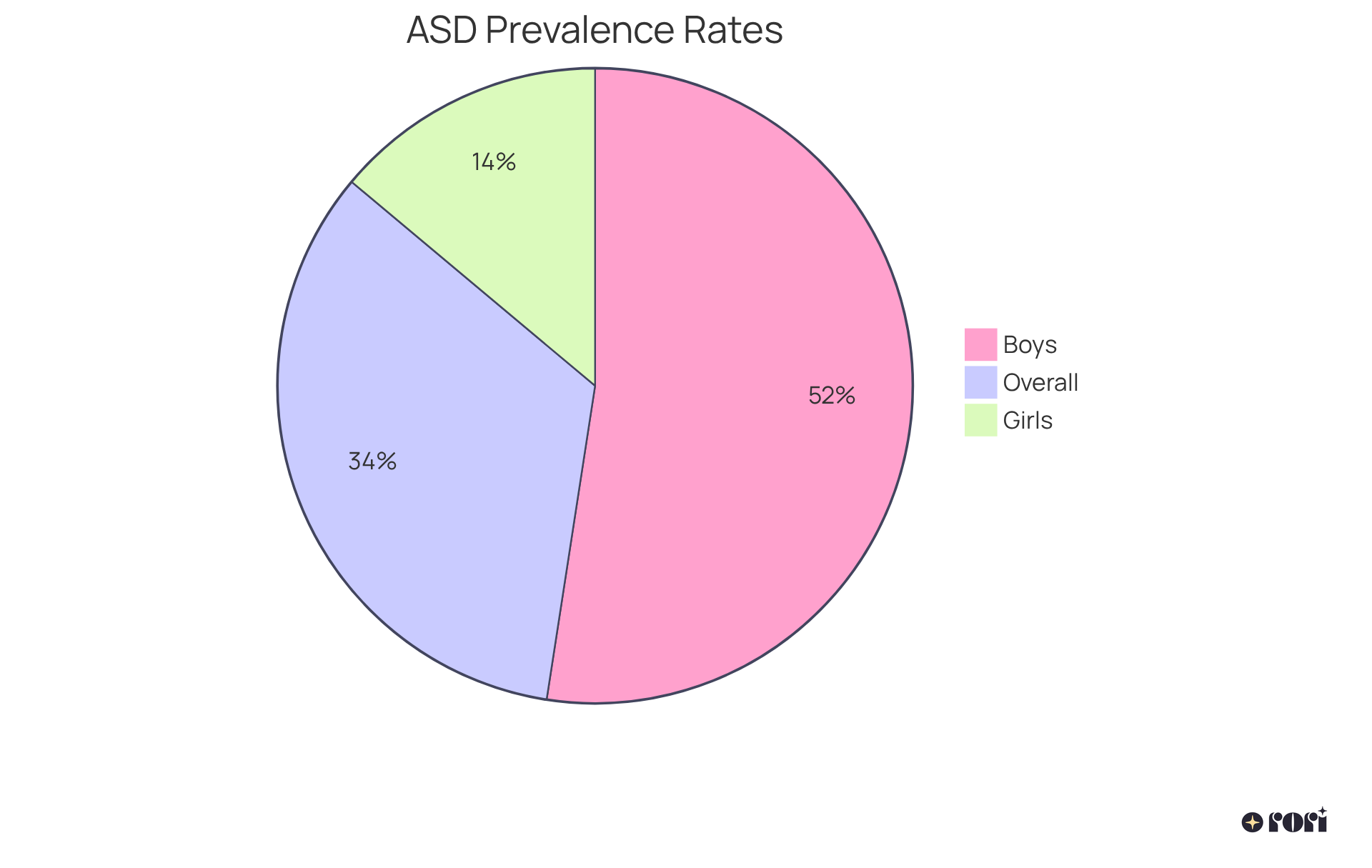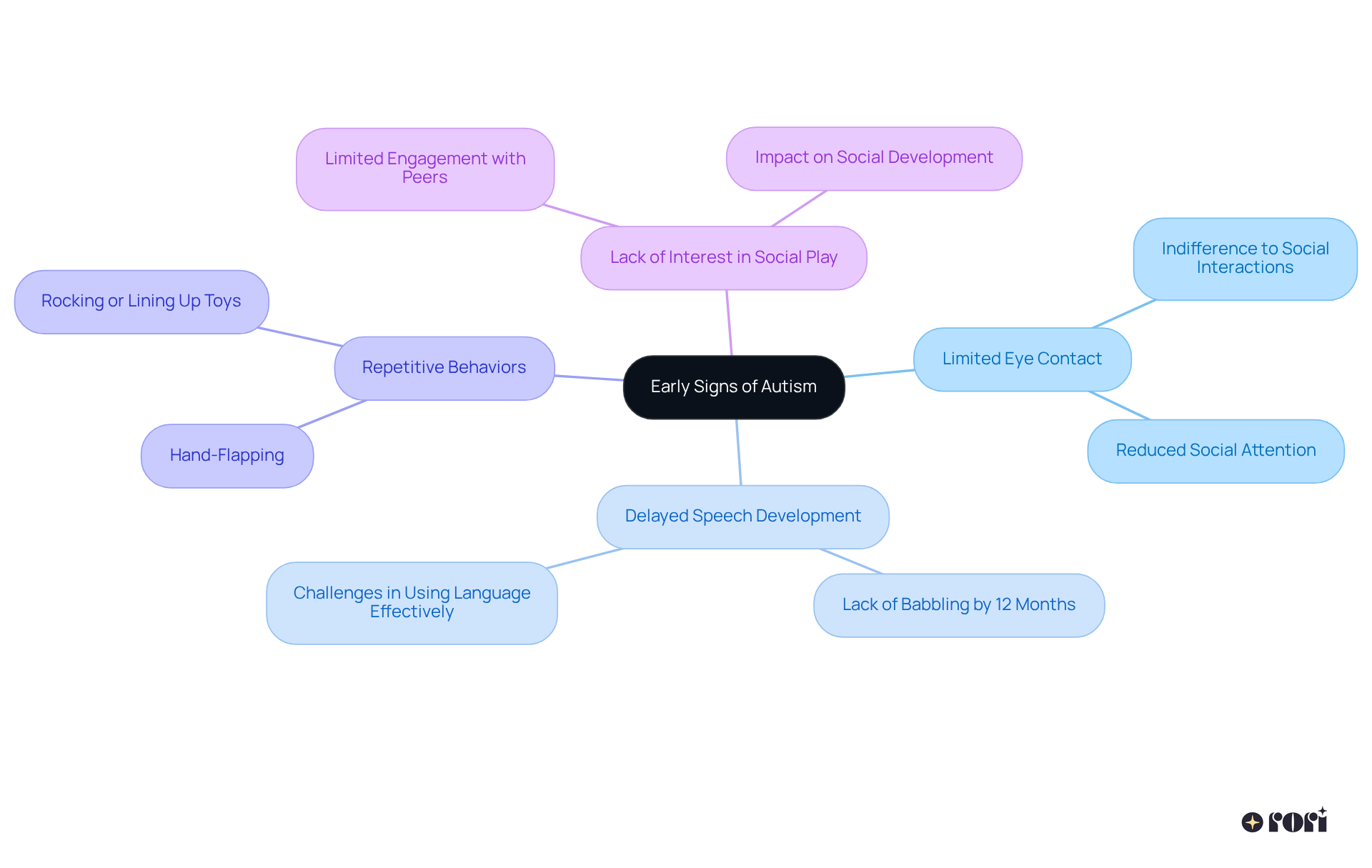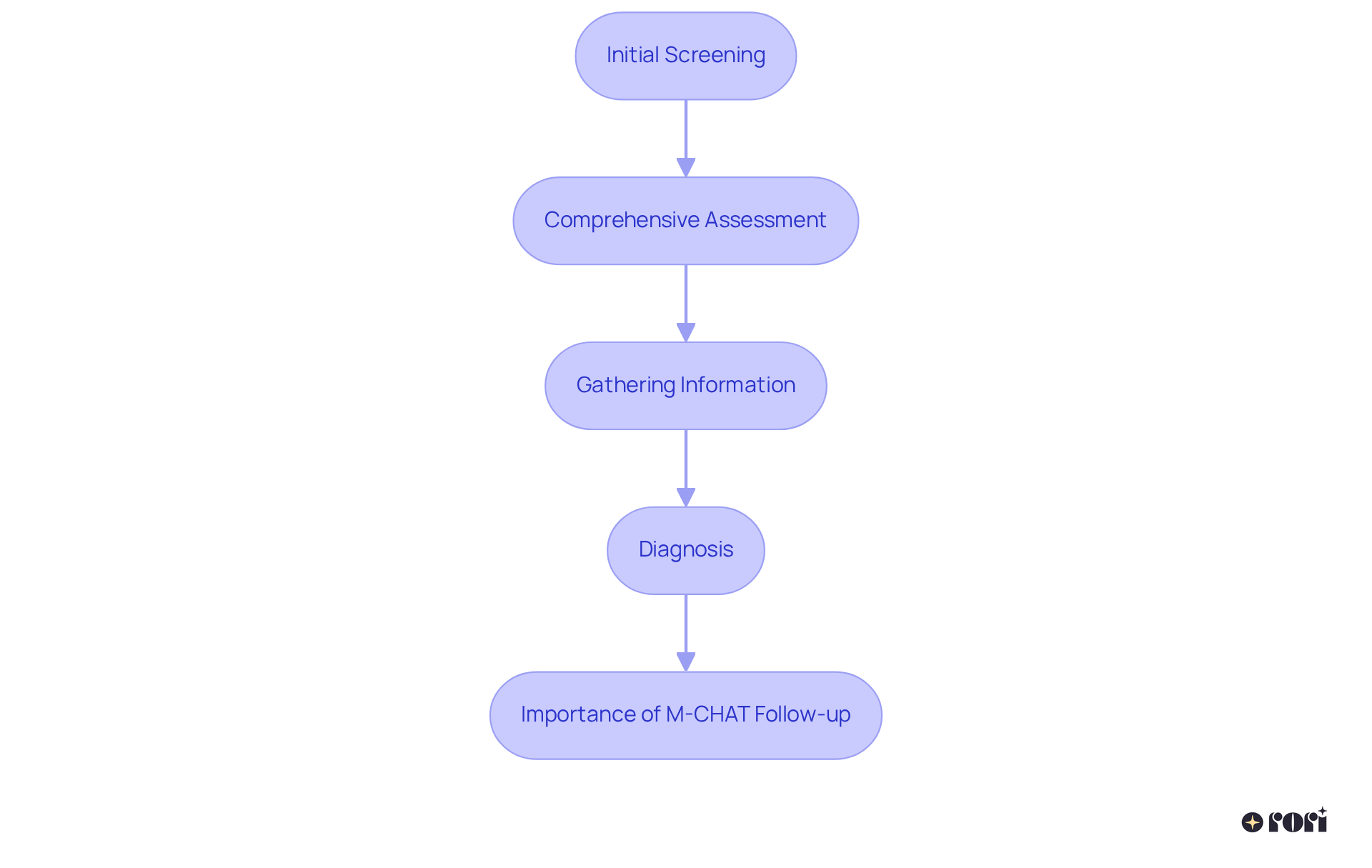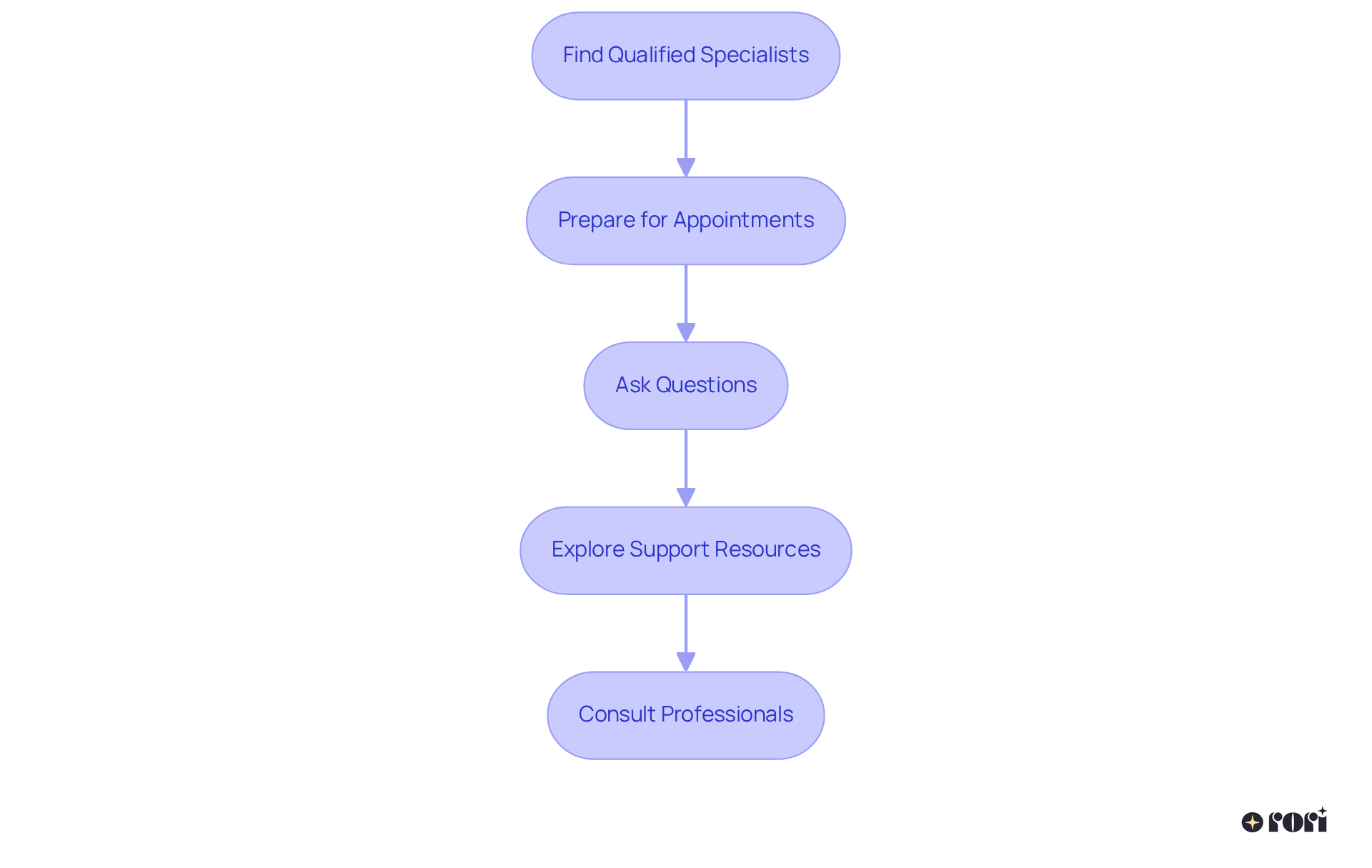This article dives into the world of autism, highlighting that it can often be diagnosed by the age of two. Early identification and intervention are so important! It’s interesting to note that while many signs of Autism Spectrum Disorder (ASD) can show up early on, the average age for a diagnosis in the U.S. is around five years. This delay can really hold back access to critical support services. That’s why it’s crucial for us to raise awareness and push for timely evaluations. Let’s explore this together!
Autism Spectrum Disorder (ASD) brings unique challenges that can really impact a child's development. Yet, many parents might not be fully aware of the early signs or the crucial need for timely diagnosis. By understanding the nuances of ASD—like its spectrum nature and the typical age for diagnosis—caregivers can feel empowered to advocate for their children more effectively.
However, did you know that the average diagnosis happens around age five? That's quite a bit later than what’s ideal! So, how can parents stay vigilant and proactive in seeking evaluations? This guide is here to help! We’ll outline essential steps to recognize early signs of autism, navigate the diagnostic process, and consult with professionals. Together, we can pave the way for better developmental outcomes. Let’s explore this journey together!
Autism Spectrum Disorder (ASD) is a complex neurodevelopmental condition that can present unique challenges in social interaction, communication, and repetitive behaviors. It’s important to remember that ASD exists on a spectrum, meaning individuals can show a wide range of symptoms and abilities. Understanding core features of ASD, like difficulties in grasping social cues and challenges with both verbal and non-verbal communication, is essential for parents and caregivers. This foundational knowledge helps you recognize potential signs of developmental disorders in children and underscores the importance of early intervention.
Research shows that ASD can often be diagnosed by age 2, but did you know that the average diagnosis age in the U.S. is around 5 years? This delay can hinder access to critical support services. In 2020, the prevalence of ASD among 8-year-olds was reported at 27.6 per 1,000 (2.8%). This highlights just how crucial awareness and early identification are. It’s also noteworthy that boys are identified with ASD at a significantly higher rate than girls—43.0 per 1,000 for boys compared to 11.4 per 1,000 for girls.
By being informed about these core features and statistics, you can advocate for timely evaluations and interventions. Together, we can enhance your child’s developmental outcomes. Let’s explore this journey together!

Early signs of autism can show up in various ways, and there are several common indicators to keep an eye on:
Recognizing these signs early is so important! Timely evaluations and interventions can really make a difference in developmental outcomes, particularly because autism can usually be diagnosed by the age of. Studies have shown that autism can usually be diagnosed by the age of early detection and intervention for Autism Spectrum Disorder (ASD), which can lead to a better quality of life for affected children. So, let’s stay alert and supportive together! We’re here to help you every step of the way!

The diagnostic process for autism typically unfolds through several essential steps:
Initial Screening: During well-child visits, pediatricians perform routine assessments to identify any potential growth delays. They often use the Modified Checklist for Autism in Toddlers (M-CHAT), which is a helpful tool. Research shows that 73% of toddlers are assessed, and 72.8% of youngsters are evaluated for autism, which can usually be diagnosed by the age of 18 or 24 months. This results in a diagnosis rate of 1.4% among those assessed.
Comprehensive Assessment: If any initial concerns arise, it’s crucial to have a detailed review by a qualified expert, like a psychologist or child specialist. This assessment might involve standardized tests, interviews, and direct observations to thoroughly evaluate the young one's behavior and development.
Gathering Information: Parents and caregivers play a vital role in this process! By sharing detailed information about the young one's developmental history, behaviors, and specific concerns they've noticed, they provide essential input for an accurate assessment.
Diagnosis: After the assessment, the expert will determine if the young individual meets the requirements for a developmental disorder (ASD). A formal diagnosis, noting that autism can usually be diagnosed by the age of, can open the door to tailored interventions and support services that significantly impact the young individual’s development and quality of life. Notably, youth who tested positive for autism are diagnosed with ASD, on average, 12 months sooner than those who tested negative. This highlights the importance of prompt assessments! Additionally, youngsters from lower-income families are identified at an average age of 4.7 years, compared to 5.2 years for those from higher-income families. The M-CHAT follow-up interview is also essential, as it can enhance screening results and ensure that youngsters receive the necessary assessments.
Let’s explore this together! We're here to help you every step of the way!

Once you identify the indicators of the condition and understand the diagnostic process, it’s really important to reach out to experts for assessment and support. Here are some friendly steps to consider:
Consulting with professionals ensures that your child receives personalized care and support, paving the way for a successful autism journey. Remember, we’re here to help you every step of the way!

Understanding Autism Spectrum Disorder (ASD) and its diagnostic process is so important for ensuring that children get the support they need as early as possible. Did you know that autism can often be diagnosed by the age of two? Yet, many children aren’t diagnosed until they’re older, which can delay access to essential services. Recognizing the signs of autism—like limited eye contact, delayed speech development, and repetitive behaviors—empowers parents and caregivers to advocate for timely evaluations and interventions.
The diagnostic process involves several key steps, including:
Engaging with specialists can really boost the chances of early diagnosis and intervention, enhancing developmental outcomes for children on the spectrum. The statistics shared highlight the urgency of addressing the gap in timely diagnoses and the importance of professional guidance in navigating this complex journey.
Ultimately, raising awareness about the early signs of autism and the diagnostic process is vital for parents and caregivers. By staying informed and proactive, you can ensure that your child receives the tailored support they need to thrive. This collective effort can lead to a better quality of life for those affected by ASD, underscoring the importance of early detection and intervention in shaping positive futures. Let’s explore this together and make sure our children have the best start possible!
What is Autism Spectrum Disorder (ASD)?
Autism Spectrum Disorder (ASD) is a complex neurodevelopmental condition characterized by unique challenges in social interaction, communication, and repetitive behaviors. It exists on a spectrum, meaning individuals may exhibit a wide range of symptoms and abilities.
What are the core features of ASD?
Core features of ASD include difficulties in understanding social cues and challenges with both verbal and non-verbal communication. Recognizing these features is essential for parents and caregivers to identify potential signs of developmental disorders in children.
At what age can ASD typically be diagnosed?
Research indicates that ASD can often be diagnosed by age 2. However, the average diagnosis age in the U.S. is around 5 years, which can delay access to critical support services.
What is the prevalence of ASD among children?
In 2020, the prevalence of ASD among 8-year-olds was reported at 27.6 per 1,000 children, which equates to approximately 2.8%.
How does the prevalence of ASD differ between boys and girls?
Boys are identified with ASD at a significantly higher rate than girls, with a prevalence of 43.0 per 1,000 for boys compared to 11.4 per 1,000 for girls.
Why is early identification of ASD important?
Early identification of ASD is crucial as it allows for timely evaluations and interventions, which can enhance developmental outcomes for children with the disorder.